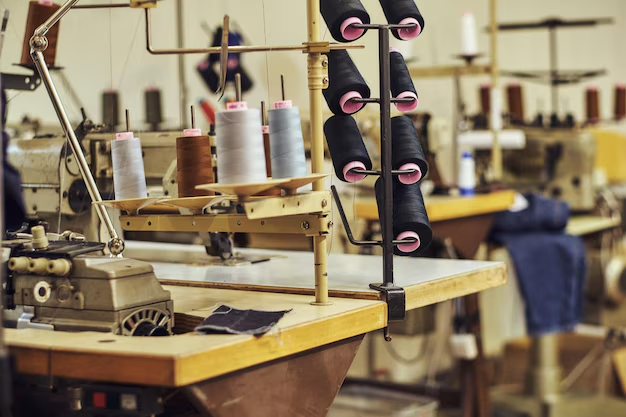Achieving Sustainability: Unveiling the Natural Fabric Crafted from Castor Oil

INTRODUCTION
WELCOME TO RUNZOER INDIA , where we explore the fascinating world of sustainable fabrics and their impact on our planet. In today’s article, we delve into an innovative solution that is taking the fashion industry by storm: natural fabric crafted from castor oil. As our society becomes increasingly aware of the need for eco-friendly alternatives, this remarkable development paves the way for a more sustainable future. Join us as we uncover the process behind this revolutionary fabric, its benefits, and how it contributes to the larger goal of achieving sustainability. Whether you are a fashion enthusiast or simply curious about the latest advancements in environmentally conscious materials, this blog is the perfect resource for you. So, let’s dive in and uncover the secrets behind this remarkable natural fabric!
Castor Oil: A Multifaceted and Dynamic Resource
The utility of castor oil, much like coconut oil, knows no bounds. With continuous discoveries yielding new applications across various industries, the versatility of castor oil and its derivatives remains a driving force in pharmaceuticals, agriculture, paper production, rubber manufacturing, food processing, cosmetics, adhesives, plastics, coatings, lubricants, and paints. Notably, castor oil biodiesel is emerging as a promising substitute for petroleum-based diesel fuels, attributed to its reduced carbon emissions and other environmental benefits; its widespread application, however, hinges on overcoming certain operational challenges.
Derived from the seeds of the castor bean, Ricinus communis, castor oil serves as a pivotal non-edible oil seed crop within the Euphorbiaceae family, offering invaluable industrial use cases. Given its non-competitive nature with food crops and non-attraction to foraging animals, castor oil stands as a preeminent commercial crop in various industries.
Unraveling the Uniqueness of Castor Oil
The distinctive physical and chemical properties of castor oil, despite its peculiar taste and appearance, stem from its composition. Notably, the presence of a hydroxyl group and double bonds in ricinoleic acid (D-12-hydroxyoctadec-cis-9-enoic acid) is pivotal in yielding a diverse array of castor oil derivatives. These derivatives, including hydrogenated castor oil (castor wax), sebacic acid, zinc ribonucleate, heptyl alcohol, ethyl heptoate, and 12-hydroxystearic acid, are currently in high demand, reflecting evolving consumer preferences.
Among the innovative derivatives of castor oil stands castor fiber, a game-changing 100% natural product that embodies eco-friendliness and sustainability. Let’s delve deeper into the intricacies of castor fibre.
Castor Fibre: Revolutionizing the Textile Industry with Sustainable Oil-based Fabric
Though the notion of fabric derived from oil might seem counterintuitive, castor oil’s distinctive properties have made this a reality. With an 85–90% composition of ricinoleic acid, castor oil’s fatty acid profile uniquely positions it as the sole commercially available vegetable oil with specific physical attributes, such as high viscosity, specific gravity, solubility in alcohols, and limited solubility in aliphatic petroleum solvents.
Through various treatment processes, castor oil and its derivatives are utilized to produce biopolyamides, a novel class of bioplastics derived from renewable resources. These bio-polyamides, predominantly derived from sebacic acid, undergo pyrolysis and polymerization to yield polyamide 6/10 and polyamide 10/10, ultimately transformed into castor fiber through extrusion. Achieving synthetic fiber-like properties from an entirely natural source exemplifies the innovation behind castor fiber.
The Sustainable Future of Castor Fibre: An Eco-friendly Solution
Inherently non-edible and unpalatable to animals, castor oil’s production presents no concerns in the food cycle. Furthermore, the prolific growth of castor plants, as evidenced by India’s robust castor seed production, underscores the natural and sustainable essence of castor fibre. Derived from the water-conserving castor plant, castor fibre ensures minimal impact on the environment and food chain, actively contributing to reduced CO2 emissions.
The Distinctiveness of Castor Fibre
Beyond its sustainability and natural origins, the unequivocal properties of castor fibre position it as a transformative force in the textile industry. Fabrics made from castor fibre embody exceptional traits:
• Wrinkle-free
Retains a pristine appearance even after multiple wash cycles, eliminating the need for ironing.
• Odor Neutralizing
Built-in bacteriostatic capabilities keep odors at bay, rendering castor fabric odor-free.
• Ultralightness
Offering 25% less fabric weight than identical 100% polyester products, without compromising performance.
• Versatile Across Climates
Offers thermal insulation, making it suitable for diverse climates.
• Quick-drying
Castor fibre fabrics dry in 50% less time than conventional fibers.
• Breathability
Ensures optimal comfort, especially for sports and activewear.
• Exceptional Comfort
Boasting a soft and skin-friendly nature, ensuring unparalleled comfort.
• Diverse Colors and Excellent Dyeing Capabilities
Enables a multitude of color options, while maintaining exceptional dyeing capabilities.
• Super Stretchability
Excels in elasticity, making it ideal for athleisure wear.
Castor Fibre: Paving the Way for the Fashion Industry's Future
Given the escalating shift towards natural products and heightened environmental consciousness, castor fibre may indeed herald the future of fashion. The possibilities remain endless for further innovations stemming from castor oil, potentially expanding the scope of castor fibre beyond sportswear.
